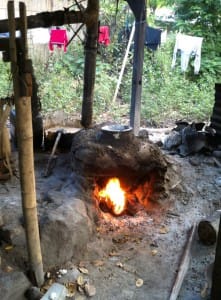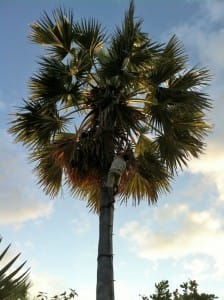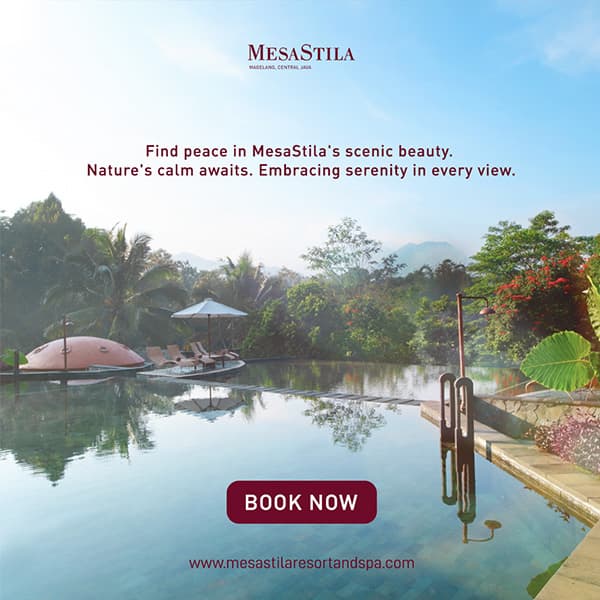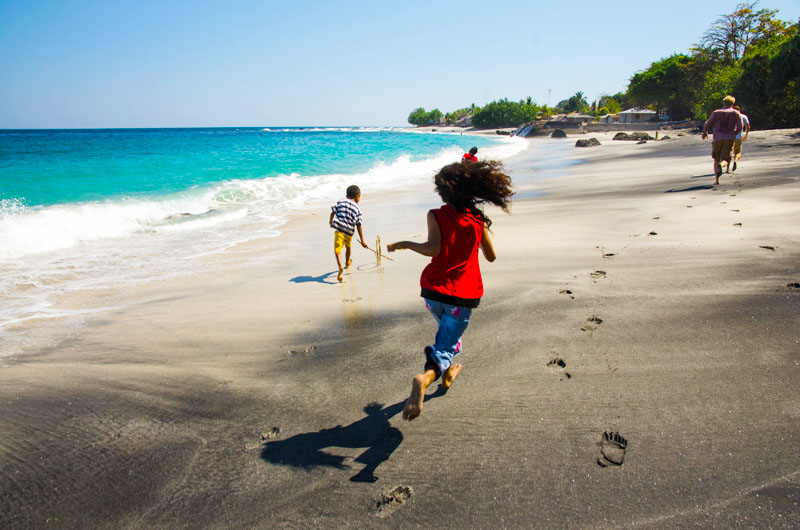
I had come many times to Indonesia and had visited islands and places all the way from Sabang to Sumbawa, but I had never set foot on NTT (Nusa Tenggara Timur), the Eastern Indonesia province. Earlier this year a project finally brought me east, to the regencies Sikka and Lio in Flores. My point of arrival was Maumere, the capital city of Sikka that has an airport. Coming from Jakarta, the first thing that struck me was how laidback it is, and how fresh the air is, with scents of dried grass and crops. Maumere is still mostly kampung, apart from the city centre and main road. Maumere is located by the sea and seafood is plenty, bought in at either the main harbour’s morning market or late afternoon in Wuring, the picturesque village populated by the daring Bajo sea gypsy community. Maumere Bay has a number of sandy beaches from where you see Pulau Besar, to where boats and dive trips go. Maumere is not at all like Kuta, Bali – no lively bars and discos, but home parties are very common.
Flores is almost three times the size of Bali with half the population, home to about ten languages and as many ethnic groups that have much in common, but also have differences that make it interesting to tour the island. The culture is different from the main cultures of Java, and the largest religion is Catholicism. Flores culture is down to earth and you are very likely to be invited by some people for food and drinks. Lepeng means chilling out with friends and sharing drinks and food and the drink is most likely to be local arak, called moke.
First allow for a disclaimer: usual precautions should be paid heed to – don’t drink or buy moke from the street. It is better to know how the moke is sourced if you want to buy a bottle, and it is better to try it with friends who are in the know. On Java and Lombok oplosan, arak of poor quality mixed with God knows what, is sold and it can have dire consequences for your well-being. In Flores the manufacturers of arak, traditional home distilleries, are usually very close to the consumers, and that is why arak is safe there. Regular drinkers of moke prefer it when it is produced traditionally with earthen kettles, burning wood and long bamboos through which the alcoholic steam flows.
In Flores, parties are not limited to evenings and nights. Sundays and holidays are days of lepeng, but lepeng can happen at any time of the day. Even in the morning you will see a group of friends preparing some food and open a bottle of moke to go with it. It is not obligatory to drink, although custom, and not everyone does. Women can drink too, but less.
Recently on a Sunday I ended up lepeng when visiting a local friend who lives near a beach at the outskirts of Maumere. By midday, a few of his friends came by to enjoy grilled fish and the beach. When the fish was done it was immediately decided that a bottle of moke had to be opened. Soon a couple of friends from the neighbourhood joined. Because there were now about eight people, a second 62 cl. Bintang bottle with moke was bought from the neighbour. This drink is often spiced with different kinds of roots, or even creatures from both land and sea. Often a kind of cucumber, pare, is put in the bottle just to make it taste more fresh. The moke this afternoon was flavoured in a more creative way, with essence from fresh apples that gave the drink a red colour and ridded some of the alcohol taste. To the tunes of both Flores and Western music we talked and made jokes until late afternoon. A third bottle was opened.
“What does moke mean to you?” I asked several of my new friends that Sunday afternoon. Replies would mostly revolve around having a good time, but the words culture and adat (custom) were also invoked. Any family and non-family gathering is just not complete if there is no moke. It relieves stress, makes you enjoy the moment and forget your troubles. It reinvigorates you after work and is good for sex, especially if spiced with something. Moke brings people together. Seemingly there is no end to the praise of moke.
The economy was also mentioned – it is an important part of the local rural economy. Many people depend upon it for their income (I mentioned that people also waste money on moke, but that is another story). Distilleries are usually small and located in the backyard. Other necessary ingredients to make a gathering complete and please the guests in Flores are tobacco, coffee and sugar, and sirih pinang (betel), although more common in the countryside or at larger ceremonies.
The drink is produced all around Southeast Asia and South Asia and is made from a variety of plants: sugar cane, coconut, the juice from the sugar palm (Enau) and the similar Lontar palm tree (Borassus sundaicus). In Flores it is mostly the latter two that are used to produce arak. The lontar juice is tasty, and it is a drink that has helped people in dry areas to survive, just like the coconut palm tree. It is a tree of life, providing all basic needs.
In Flores, lontar juice is called moke putih (white moke). In Indonesian the juice is called tuak manis (sweet tuak) and it is consumed all over Indonesia, although it is becoming more unusual. Sellers of tuak manis even used to stalk the streets of Jakarta until about two decades ago. Now less than a handful of sellers remain. What is so remarkable about this drink is not just the taste; it is sweet when just fetched from the tree and until a few hours later when it turns a little bitter and sour. At this stage it has already fermented and is an alcoholic beverage like beer.
Tuak manis is extracted from the lontar tree through an intricate process where one or several of the tree’s large branches are cut, tied with wood, and hit for several days until fluid sips out of the branch tip. Bamboo containers or buckets are then placed under the tip. Within 12 hours these contain up to five litres of tuak manis. To get both quality and quantity, the branch is finely cut and cleaned each time the juice is fetched. The branch continues to give juice for about three months, twice a day. The lontar blossoms twice a year and two trees can support a family with enough fluid to live if water is scarce. Both the male and the female lontar can produce juice, but usually the male is used because the female is more difficult and must be tapped prior to fruiting. If left untouched fruits develop, which are used to feed pigs and are also delicious as dessert. The juice can also be used for the production of sugar. Tuak manis is nutritious and healthy.
As mentioned previously, it is not obligatory to drink moke. You can still enjoy Flores culture and social gatherings there without it, but knowledge of local culture is always helpful. If you do not like alcoholic beverages you should give tuak manis a chance. It is safe, healthy and tasty, direct from nature.




